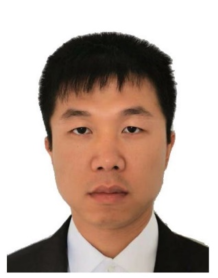Industry Relations: An Introduction to Neuromorphic Computing
29 June 2022 (Wednesday)
20:00-21:00 (CST)
Online via Tencent Meeting
Organised by the IEEE Computational Intelligence Society Shenzhen Chapter.
Activity Aim & Talk
In this virtual activity, Luziwei Leng from Central Research Institute, Huawei 2012 Laboratories will introduce the related work of neuromorphic computing. Traditional AI faces problems such as prohibitive computational cost, high energy consumption, poor generalization, and low robustness. Neuromorphic computing simulates the principle of the brain at the algorithm and chip level. It has the characteristics of event triggering, asynchronous computing, sparse response, and strong plasticity. It is expected to realize online learning with low latency and low energy consumption. At the chip level, the neuromorphic chips simulate the functional characteristics, signal transmission, and learning methods of brain neurons, breaking through the conventional Von Neumann architecture regarding the processor/memory separation. At the algorithm level, the top-down approaches use the generalized principles of brain processing information, such as predictive coding, free energy principle, and self-supervised learning, to better solve AI problems; The bottom-up approaches start with neuromorphic structures, such as spiking neuron models, synaptic dynamics, and brain microcircuits, to build low-energy and high-efficiency networks. These directions gradually intersected and merged, resulting in a lot of interesting work.
Meet the Speaker

Luziwei Leng, received the B. Sc. degree in 2011 from the University of Electronic Science and Technology of China, the M. Sc. degree in 2014 and the Ph. D. degree in 2019, both from the University of Heidelberg, Germany. In 2018, he visited the University of Bern, Switzerland. From 2012 to 2019, he participated in the neuromorphic computing sub-project of the EU Human Brain Project and published many papers in journals such as Scientific Reports, PLOS Computational Biology. He also published papers in CVPR, CNS, and other top machine learning and neuroscience conferences, and served as a reviewer for CVPR, ECCV, and NeuraIPS. In 2019, he joined Advanced Computing and Storage Laboratory, Central Research Institute, and Huawei 2012 Laboratories, mainly researching neuromorphic computing and machine learning. Currently, he serves as the sub-project leader of the major project of Science and Technology Innovation 2030 (“Brain Science and Brain-inspired Research”); Neuromorphic Chip Architecture Supporting Online Learning, and the co-supervisor of the SUSTech-Huawei Joint Master Program.
